Andy Warhol Marilyn Monroe
Introduction to Andy Warhol's fascination with celebrity culture
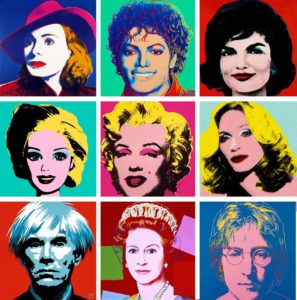
Pop artist Andy Warhol, a visionary artist deeply fascinated by celebrity culture, particularly the allure and mystique surrounding iconic figures like Marilyn Monroe, saw celebrities not just as individuals but as symbols of a consumer-driven society obsessed with fame and glamour.
For Warhol, celebrities were more than just individuals – they were symbols of a consumer-driven society obsessed with fame and glamour.
Through his art, Warhol sought to blur the lines between high and popular culture, elevating the ordinary to the extraordinary.
This obsession with celebrity became a central theme in his work, as he immortalised figures like Marilyn Monroe through his iconic silkscreen prints, transforming them into larger-than-life icons that reflected society’s insatiable appetite for fame and beauty.
This intersection of art and celebrity elevated Warhol to a similar status, blurring the boundaries between artist and subject in a way that continues to captivate audiences today.
Throughout his career, Warhol produced nearly 800 printed images on paper, alongside numerous trial proofs and unique variants of each portfolio.
His prolific output played a pivotal role in fueling the ‘print boom’ of the 1960s. Warhol’s entrepreneurial spirit led him to establish his own print publishing company, Factory Additions, which continued to release portfolios featuring his most iconic themes.
The Marilyn series epitomizes Warhol’s fascination with celebrity culture and his penchant for repetition. His distinct screen printing technique, coupled with his self-promotional zeal, enabled Warhol to reshape the trajectory of art history.
The widespread dissemination of his Marilyn prints not only revitalized the actress’s image in popular culture but also solidified Warhol’s status as a celebrity in the very commercial world he sought to depict.

Why Marilyn Monroe?
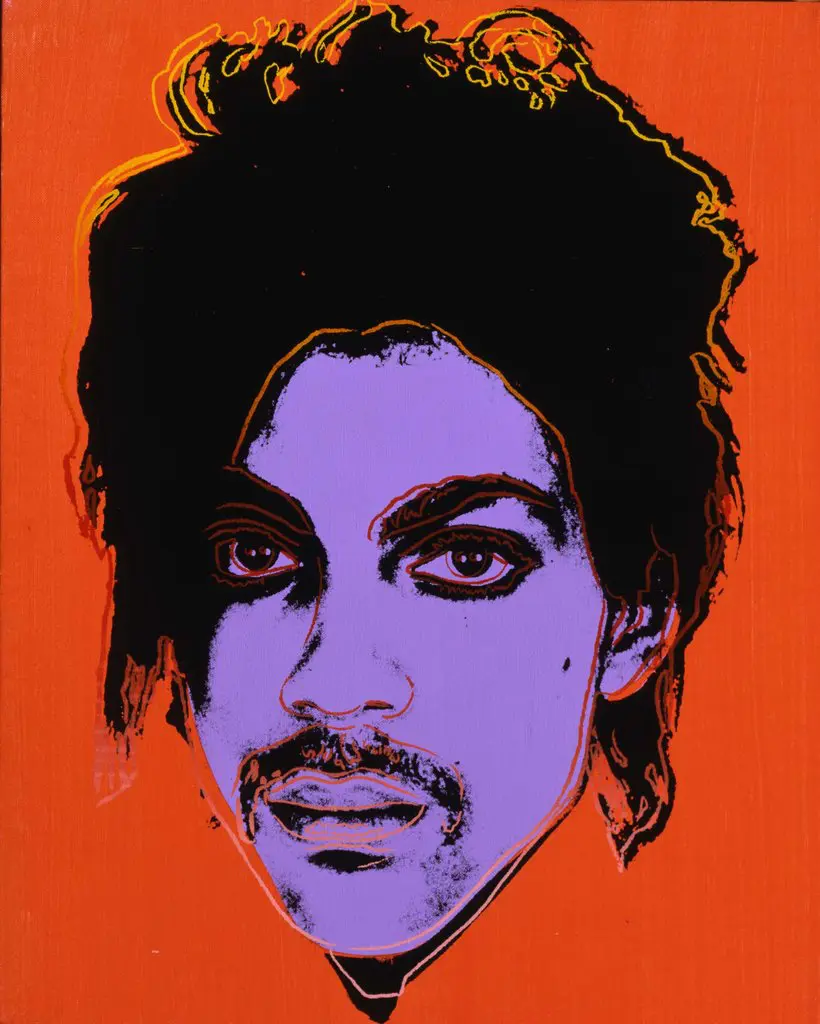
Andy Warhol’s fascination with celebrity culture and its profound influence on contemporary society was evident throughout his career.
Among the famous women who captured his imagination were luminaries like Ingrid Bergman, Liz Taylor, Edie Sedgwick, and, notably, Marilyn Monroe.
In the pantheon of American stars during his era, Marilyn Monroe, who happened to die in August 1962, stood out as arguably the most famous and recognisable.
Her ubiquity made her an ideal subject for Warhol’s exploration of the elevation of individuals into symbols or commodities, emblematic of the consumer culture prevailing in post-World War II America, paralleling his interest in items like soup cans.
Warhol’s portraits of these luminaries, notably including His decision to portray the biggest and brightest stars of the time served to magnify their allure, perpetuating the cult of celebrity.
Painting Marilyn just two weeks after her passing, Warhol’s repetition of her image served as a commentary on mass production and the proliferation of her likeness in the media. Moreover, it underscored Warhol’s critique of the dehumanizing aspect of celebrity culture.
By repeating her image, he prompted viewers to contemplate the individual behind the celebrity facade.
This repetition also carried echoes of religious iconography, with saints and martyrs often depicted at scale and with intense frequency.
Warhol’s choice to apply this technique to Hollywood stars, mirroring his work with Campbell’s soup cans, may be interpreted as a commentary on the elevation of these figures to a status akin to worship in modern society.
In Marilyn Monroe’s iconic visage, Warhol discovered a potent symbol through which to reflect the zeitgeist of his era, capturing the essence of the times in which he lived.
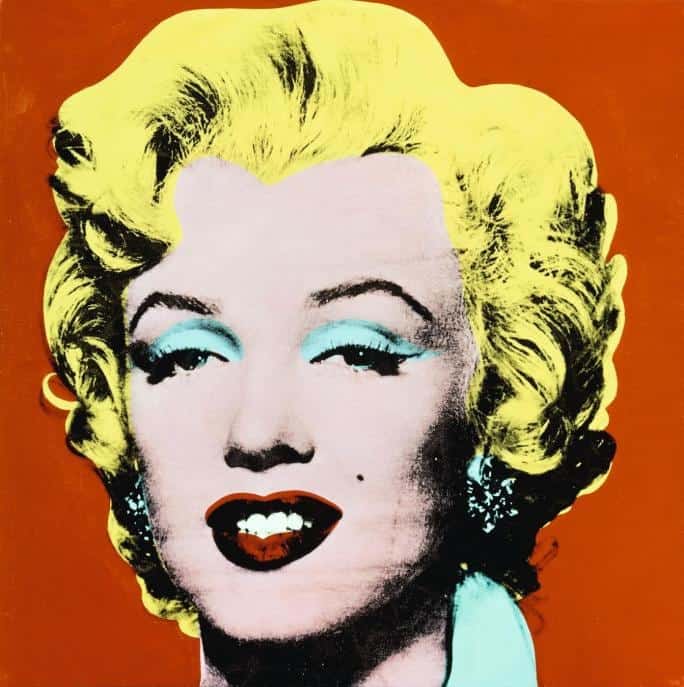
The famous publicity photo from the film Niagara of Marilyn Monroe
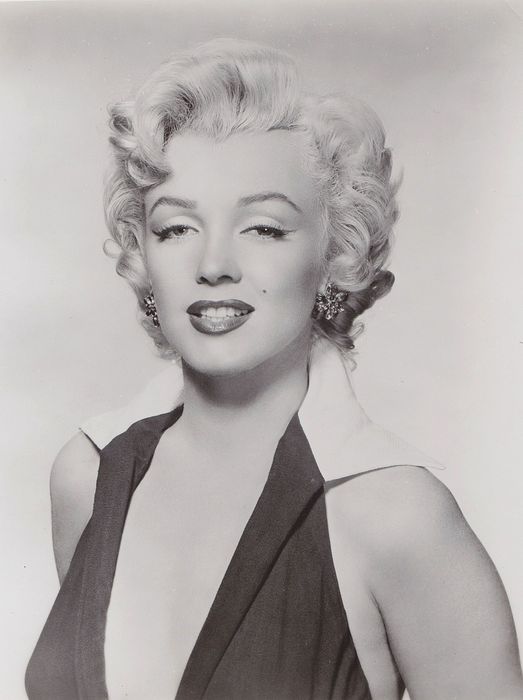
Initially capturing Monroe shortly after her demise in the Marilyn Diptych, based on a still from the 1953 film “Niagara,” Warhol’s fascination with her image endured.
In 1967, he produced a portfolio of ten screen prints, all based on the same photograph as his iconic 1962 portrait.
This collection marked the apex of Warhol’s screen printing career, catapulting him into the realms of critical acclaim and popular recognition.
Through his repeated use of Marilyn’s face in different colour palettes and compositions, Warhol managed to capture both her physical beauty and the complex emotions she evoked.
In doing so, he elevated Monroe from being just a movie star to becoming a symbol of 20th-century popular culture that continues to resonate today.
By exploring themes of fame, tragedy, and glamour through his artistic vision centered around Marilyn Monroe, Andy Warhol solidified her place as an icon not just in Hollywood history but also in the world of modern art.
Marilyns in Pop Art
In Warhol explained in his own words, “I wanted something stronger that gave more of an assembly line effect…”
His silk screening process involved enlarging a chosen photograph, transferring it onto silk with glue, and then applying ink, resulting in slightly different iterations of the same image—a technique that excited him greatly.
It was the untimely passing of Marilyn Monroe in 1962 that sparked Warhol’s inspiration to immortalize her beauty through his art.
Exemplified by pieces like “Marilyn Monroe 23” and “Marilyn Monroe 27,” each print pulsates with vibrant hues—a stylistic trademark that would define Warhol’s subsequent Pop paintings.
This bold graphic approach and kaleidoscope of colors delve into Monroe’s vivacious yet intricate persona, exploring her visual representation within American popular culture, much like Warhol explored with his art prints.
Each portrait reflects an exterior of glamour and celebrity, seemingly impenetrable, yet subtly alluding to the darker undercurrents of fame in contemporary society.
One of Andy Warhol’s most iconic series features Marilyn Monroe, capturing her beauty and fame in a way that transcends traditional portraiture.
Warhol’s use of vibrant colors and repetitive images reflects the mass production culture of the 1960s, where Monroe herself was a symbol of glamour and consumerism.
The juxtaposition of Monroe’s delicate features with Warhol’s bold graphic style creates a striking commentary on the contradictions between celebrity persona and personal identity.
Through his portraits of Marilyn Monroe, Warhol also explores themes of mortality and fame.
By repeating her image multiple times within each artwork, he blurs the line between individuality and mass media representation, a technique Warhol started refining early in his career.
This repetition not only highlights Monroe’s ubiquitous presence in popular culture but also hints at the ephemeral nature of stardom.
Warhol’s portrayals of Monroe serve as both a celebration and critique of celebrity culture, inviting viewers to contemplate the underlying fragility behind society’s obsession with fame.
Screen Print and Silkscreen
Andy Warhol: “In August 62 I started doing silkscreens. I wanted something stronger that gave more of an assembly line effect.
With silkscreening you pick a photograph, blow it up, transfer it in glue onto silk, and then roll ink across it so the ink goes through the silk but not through the glue.
That way you get the same image, slightly different each time. It was all so simple quick and chancy. I was thrilled with it.
When Marilyn Monroe happened to die that month, I got the idea to make screens of her beautiful face the first Marilyns.”
His first experiments with screens were heads of Troy Donahue and Warren Beatty before Warhol began to create prints of Marilyn.
The Marilyn Monroe Screen Print Portfolio by Andy Warhol in 1967 serves as an extension of his initial silkscreen painting.
Each image within the portfolio measures 36 x 36″, presenting a significantly large and tightly cropped portrayal of Monroe’s face.
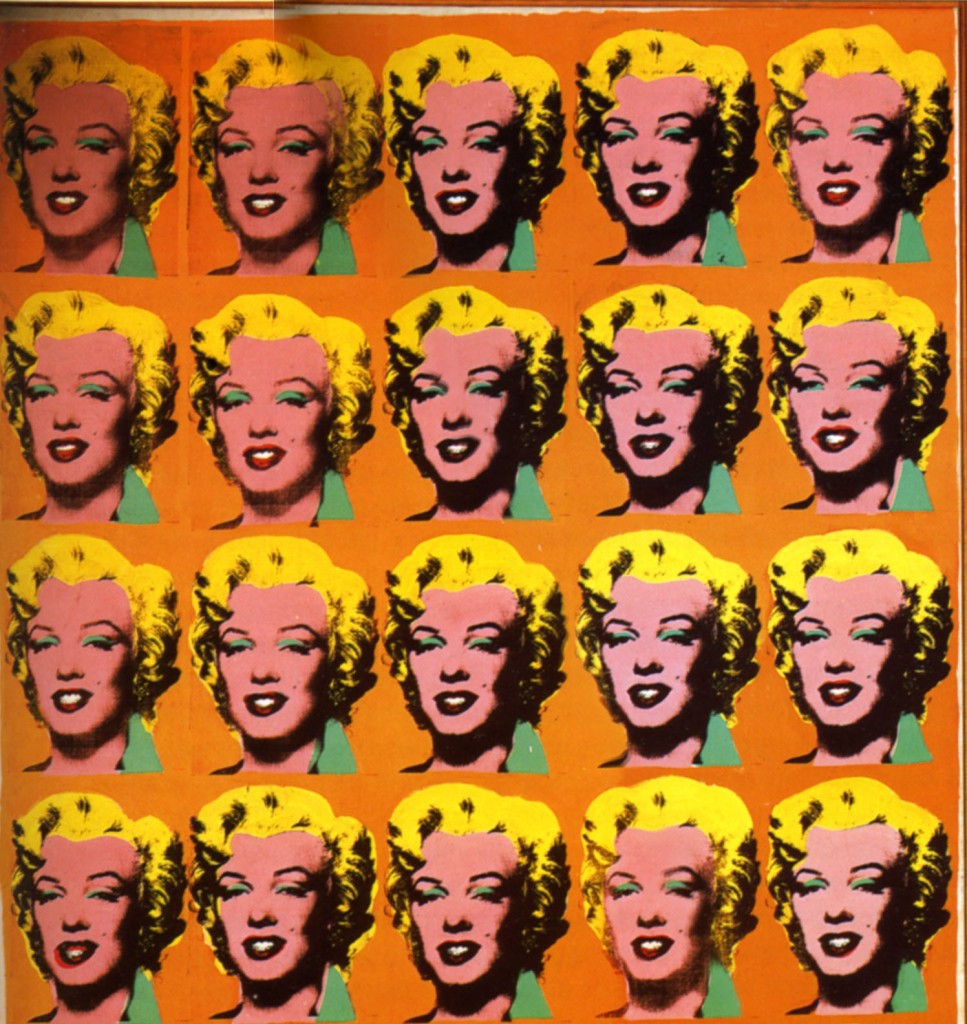

Vibrantly coloured, these prints capture the essence of her vivacious personality, with her iconic lips often rendered in bold shades of red.
Additionally, various shades of yellow accentuate her platinum blonde hair in many of the prints, showcasing Warhol’s adept use of colour in his Andy Warhol prints.
However, one print stands out from its vivid counterparts; Monroe is depicted in silver and black, a stark departure that recalls the cinematic experience of watching her in black and white.
These darker hues also serve as a poignant reminder of the actress’s untimely demise.
Despite the somber tones, the overall effect of the colors is to enliven Marilyn Monroe’s iconic status and exude her enduring celebrity glamour.
Through the repetition of imagery, Warhol skillfully evokes Monroe’s ubiquitous presence in popular culture.
Examination of how collaboration with celebrities like Marilyn impacted Warhol's fame
Warhol’s collaboration with celebrities, particularly Marilyn Monroe, played a pivotal role in shaping his fame and artistic legacy, cementing his status through works like through his iconic portraits of Marilyn, Warhol not only immortalised her image but also elevated himself to the status of a pop culture icon.
The fusion of Warhol’s unique artistic vision with Marilyn’s celebrity persona captivated audiences and propelled both individuals into the realm of cultural phenomena.
The intrinsic connection between Warhol and Marilyn symbolises a symbiotic relationship between art and celebrity culture that continues to fascinate scholars and admirers alike, as seen in iconic Andy Warhol prints.
By blurring the lines between high art and popular culture, Warhol not only expanded the boundaries of contemporary art but also redefined the role of celebrities in shaping public perceptions about art and fame.
Collaborating closely with luminaries like Marilyn Monroe allowed Warhol to transcend traditional artistic constraints and carve out a distinctive niche within the cultural zeitgeist.
Conclusion
Through the endless repetition of her image in his artwork, akin to a Campbell soup can, Warhol purposefully transforms Marilyn from a flesh-and-blood individual into a commodified product, ripe for manufacturing and consumption.
In doing so, he sheds light on the mechanisms upon which Hollywood and celebrity culture thrived, potentially overshadowing the humanity of Marilyn herself.
As the Pop artist aptly remarked, “The more you look at the same exact thing, the more the meaning goes away, and the better and emptier you feel.”
Andy Warhol’s Marilyn Monroe stands as the epitome, the quintessential masterpiece of Pop Art, instantly recognisable in its vibrant, glamorous splendor.
This portrayal of the iconic actress Marilyn Monroe has transcended mere artwork to become a symbol of 20th-century popular culture.
Warhol’s series not only showcases his innovative printmaking technique but also reflects his mission to mirror the icons and products of mass culture during his time.
Similarly, Marilyn Monroe continues to captivate audiences through her timeless allure and complex portrayal of femininity.
Her enduring legacy as a symbol of glamour, tragedy, and vulnerability, especially since Marilyn Monroe died 5 August 1962 from an overdose of sleeping pills, has inspired countless artists to explore themes of identity, celebrity, and the human experience in their work.
Together, Warhol and Monroe have set a standard for creativity that continues to shape the landscape of contemporary art, underlined by the support of the Andy Warhol Foundation for the Visual Arts.
Warhol, known for his avant-garde approach to printmaking, utilised the screen print technique on subjects from Marilyn to soup cans, demonstrating a spectrum of graphic possibilities within a single image.
Through this method, he manipulated colours and crafted contrasting effects with each iteration, imbuing his work with a dynamic and experimental spirit that characterised much of the art prints produced by Andy Warhol.
His exploration of printing and painting in various permutations reveals a playful experimentation with traditional artistic processes, ultimately propelling him into a new realm of commercial painting.








